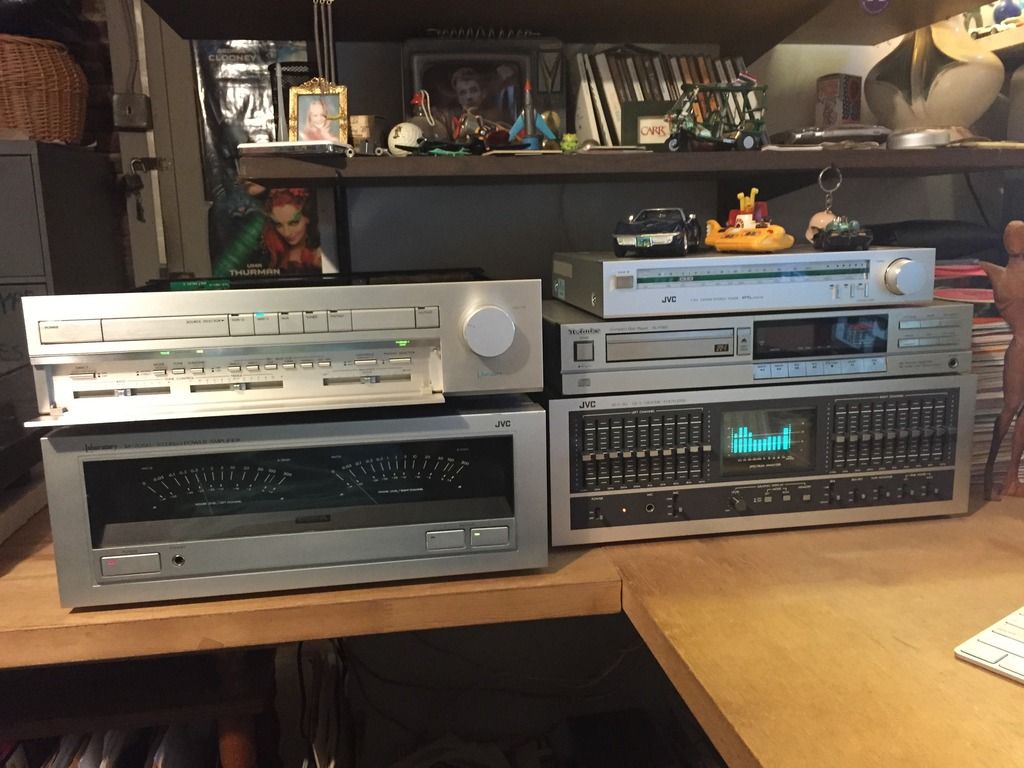I am kind of casually looking at / researching vintage (1970s / 80s) Graphic Equalizers . I think that at some point in the not too distant future I might want to purchase one to use with my Yamaha CR-2020 receiver and Klipsch Forte speakers.
I know that some people are not fans of using Equalizers and would recommend not adding one to a good stereo system because they can tend to possibly degrade the tone to some degree. And while I understand that idea and value anyone's experience and advice, I still would like to possibly purchase one because I use my sound system for a number of things. I use it to listen to music, from my computer / itunes, but also will be using a turntable, CD player and tape deck. And I listen to the audio from streaming movies and shows from my computer through it as well. So having an EQ unit could be a useful tool.
I would appreciate anyone's advice regarding good Graphic EQ units to consider. There is really not that much, in terms of extended reviews or indepth descriptions of user's experiences with EQ units online (even in this forum) that I have been able to find. So I created this thread to ask for any input that I could possible get from the many experienced audiophile individuals here !
I would like to find something that is relatively simple... meaning just analog sliders (stereo) as opposed to an electronic screen and buttons to program the various htz levels. I also would like to find something that was well built and intended to be used with a high quality audiophile home sound system.
Some of the stereo EQ units I have identified from that period that look interesting are units by Pioneer, Marantz, Yamaha, Soundscraftsmen, MXR, and others. But again there is not much info in terms of good reviews regarding the sound quality and component quality of these EQ units online.
So... any help with this would be great ! What EQ units do you like ?
I know that some people are not fans of using Equalizers and would recommend not adding one to a good stereo system because they can tend to possibly degrade the tone to some degree. And while I understand that idea and value anyone's experience and advice, I still would like to possibly purchase one because I use my sound system for a number of things. I use it to listen to music, from my computer / itunes, but also will be using a turntable, CD player and tape deck. And I listen to the audio from streaming movies and shows from my computer through it as well. So having an EQ unit could be a useful tool.
I would appreciate anyone's advice regarding good Graphic EQ units to consider. There is really not that much, in terms of extended reviews or indepth descriptions of user's experiences with EQ units online (even in this forum) that I have been able to find. So I created this thread to ask for any input that I could possible get from the many experienced audiophile individuals here !
I would like to find something that is relatively simple... meaning just analog sliders (stereo) as opposed to an electronic screen and buttons to program the various htz levels. I also would like to find something that was well built and intended to be used with a high quality audiophile home sound system.
Some of the stereo EQ units I have identified from that period that look interesting are units by Pioneer, Marantz, Yamaha, Soundscraftsmen, MXR, and others. But again there is not much info in terms of good reviews regarding the sound quality and component quality of these EQ units online.
So... any help with this would be great ! What EQ units do you like ?


 .
. .
.
